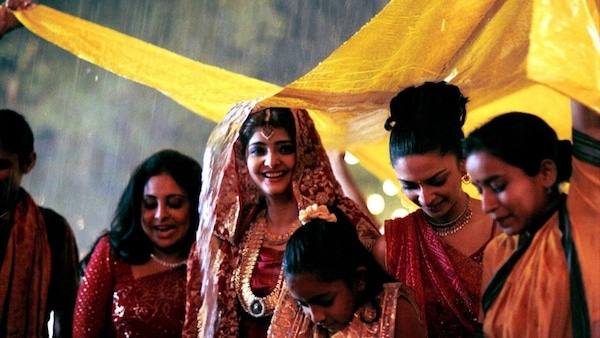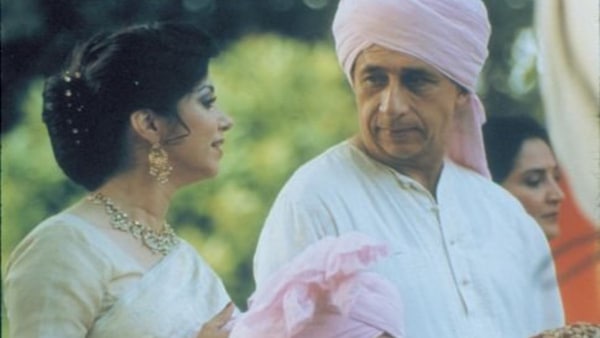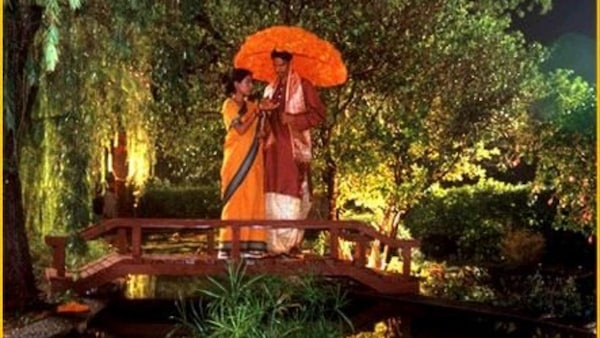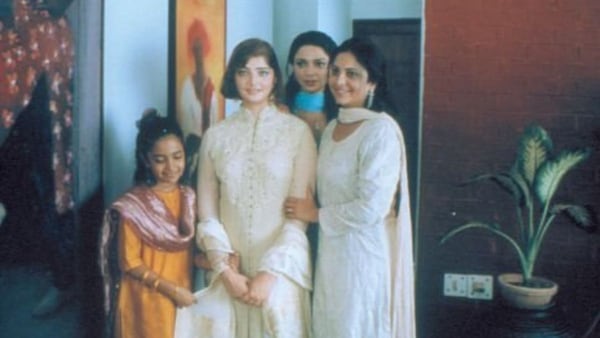Monsoon Wedding turns 20: Looking back at Mira Nair’s Golden Lion-winning tender family drama
Mira Nair’s groundbreaking film on big fat Indian weddings took an intimate, empathetic look at the madness and chaos that surrounds a mega event.

Last Updated: 02.46 PM, Nov 30, 2021
Monsoon Wedding, written by Sabrina Dhawan and directed by Mira Nair, is the heady, dizzying slice-of-life drama about a certain upper-class North Indian wedding in a plush Delhi neighbourhood. Released in 2001, the film proudly claimed the Golden Lion trophy at the Cannes Film Festival. The film centred on one particular family, its idiosyncrasies and the madness that ensues when all members of an extended family are holed up under one roof.
Monsoon Wedding was a rare film that spoke about everything, from class divide, the cycle of debt big fat Indian weddings propel families into, arranged marriages — but with nifty humour. The camera flits from one room to the other, grazing through the many events that unspools at every corner of the Verma household. Eyes meet across the room during dance rehearsals, clandestine affairs are forged and showers of marigold petals round off this chaotic exuberance.
Despite the grandness of the premise, Monsoon Wedding is not anything like the Sooraj Barjatya fares ala Hum Aapke Hain Koun (1994) or Hum Saath Saath Hain (1999). Nair’s portrait is intimate — she liberally uses handheld camera and close up shots to establish the dynamics between her many family members who have come down to attend the wedding. By doing so, she completely does away with an exposition.
At the centre of the action is Lalit (Naseeruddin Shah) and Pimmi (Lilette Dubey), who have arranged their elder daughter Aditi (Vasundhara Das)’s marriage to a desirable NRI groom Hemant (Parvin Dabas). Both Lalit and Pammi are determined to pull all stops to impress the groom’s family — but with bills piling up, Lalit deploys his Australia-returned nephew Rahul (Randeep Hooda) to chauffeur families from airports, but switch on the AC only when he has collected them; or bartend for the wedding but be careful enough to make smaller pegs. Mira Nair crafts such moments of subtle heartbreaking humour as it spotlights the plight faced by parents to expend all their life’s savings to get their daughters married in the grandest possible way.

The film upholds the conflicts between traditionalism and the influx of modern customs into weddings. In one scene, Lalit admonishes wedding organiser PK Dubey (Vijay Raaz) for using white fabric for the wedding tents. PK argues, it is the “millennium style. Y2K dot.” Lalit retorts that he’d rather want something in “yellow, red or purple,” because, after all, it is not a funeral but a wedding. The characters speak mostly in English, while the oldest generation prefers to communicate in either Hindi or Punjabi. Even the family’s help, Alice, has an English name, Dubey points out in a scene. Unlike Hum Saath Saath Hain, Nair’s film isn’t a manifesto for Indian customs. The film debuted during the turn of the century, when the country was at the cusp of globalisation. It was also an era where Bollywood shifted its focus from stories on college romances to the affluent Indian diaspora. From Kaho Na Pyaar Hai to Rehnaa Hai Terre Dil Mein, the NRI character was depicted as suave, desirable and an embodiment of liberal, western values. Even Pardes painted the diasporic life as the ideal portrait of lavishness and traditional customs. Instead, the film keenly examines the crisis of identity amid a burgeoning globalisation.

The nexus of class and culture is explored further with Alice and Dubey, as the two recreate set-pieces from popular Hindi cinema. From the two standing under a marigold umbrella exchanging wedding vows, to repairing light fuse together, their romance brimmed with silences, glances and an old-world nostalgia. Their meet-cute, thus, plays out in slow-motion and has Loafer’s lilting romantic number Aaj Mausam Bada, playing in the background. In contrast, Rahul and Ayesha (Neha Dubey)’s affair is risqué — their exposure to a different culture is evident from their interpersonal interactions.
Monsoon Wedding was groundbreaking. It was the first mainstream film that focused on dysfunctional families without making caricatures out of them. It was also refreshingly non-judgemental of its characters. Be it Aditi, who’s tired of waiting around for her married lover to commit to her and wants an easy escape, or Alice (an outstanding Tilottama Shoma) sneakily donning the heavy jewellery and gaping at bejewelled self with awe in the mirror, Nair’s narrative is remarkably empathetic towards its women. Or even Lalit, who cowers at the thought of calling out a pedophilic distant relative, because his family is indebted to the relative’s financial generosity.

20 years after its release, Monsoon Wedding remains a compelling portrait of India undergoing globalisation. The film traces the contours of a typical upwardly mobile family in Delhi and is peppered with moments of casual sexism, where even the nicest men like Lalit dismisses his son for engaging in effeminate activities like dancing, and his wife for only shopping and not partaking in ‘serious organisational work.’ The overlapping family discussions, where the older generation is cynical of a career in writing, focus on the generational and cultural divide. It’s a worthy precursor to films like Kapoor and Sons (2016) and Dil Dhadakne Do (2015), only less glossy and more authentic.
Watch Monsoon Wedding here.

